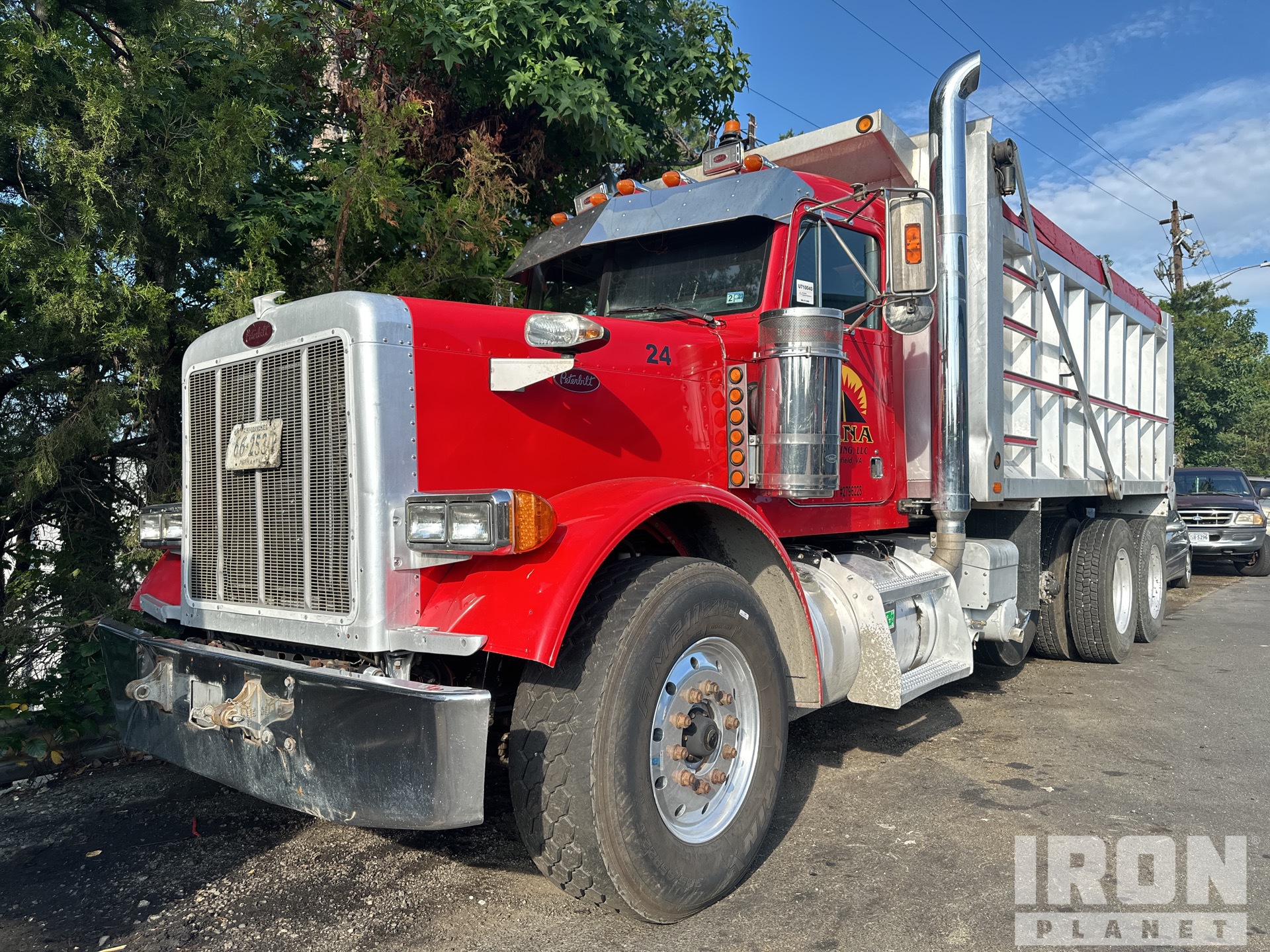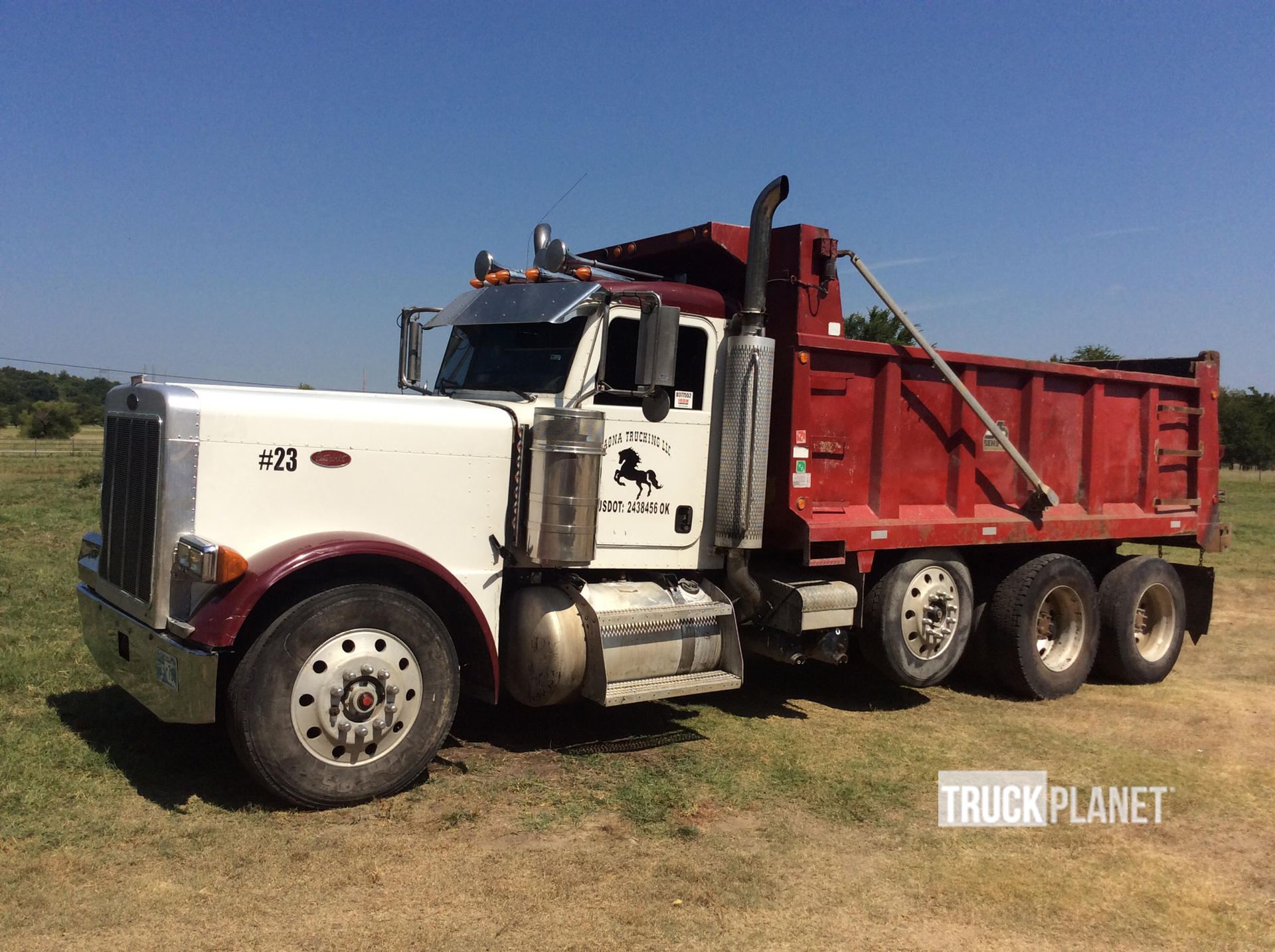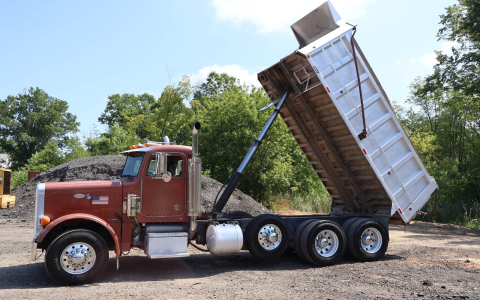Find Your Peterbilt 379 Tri Axle Dump Truck for Sale Today
If you’re on the hunt for a legendary workhorse that can handle the toughest jobs, your search likely ends with finding a Peterbilt 379 tri axle dump truck for sale. This isn’t just any truck; it’s an icon of American heavy-duty hauling, revered for its brute strength, classic styling, and unparalleled durability. As someone who’s spent over a decade crawling under, driving, and dissecting every major truck model, I can tell you that the Peterbilt 379, especially in the tri-axle dump configuration, occupies a special place on the job site. This guide is designed to cut through the noise and give you the real-world, practical knowledge you need to find the right one for your business. We’ll delve into what makes this model so special, what to look for in a used unit, and how to ensure your investment pays off for years to come.
Why the Peterbilt 379 Tri Axle is a Hauling Powerhouse
Before you start your search for a Peterbilt 379 tri axle dump truck for sale, it’s crucial to understand why this specific model is so highly sought after. Production of the 379 ended in 2007, but its reputation has only grown since. Its long-nose conventional design isn’t just for looks; it allows for easier maintenance and better engine cooling. The frame rails are famously robust, designed to withstand the brutal twisting forces of off-road and construction site work.

The tri-axle setup is the key to its success in dump truck operations. The third axle allows for a significantly greater legal payload capacity compared to a standard tandem-axle truck. This means you can carry more material—be it gravel, sand, or asphalt—per trip, directly boosting your productivity and profitability. When you’re looking for a heavy duty Peterbilt dump truck, you’re investing in a machine built from the ground up for punishment.
Key Features to Inspect Before You Buy
Not every used Peterbilt 379 is a gem. A thorough inspection is non-negotiable. Here’s a breakdown of the critical areas to focus on, based on years of hands-on experience.
Engine and Powertrain
The heart of the beast. The 379 was commonly equipped with legendary engines like the Caterpillar C15 or the Cummins ISX. Look for maintenance records. A well-documented engine with regular oil changes is worth its weight in gold. Listen for unusual knocks or puffs of smoke on startup. Check the transmission—whether it’s a 9, 10, 13, or 18-speed—for smooth shifting and no grinding sounds. The clutch should have a firm, consistent feel.
Frame and Chassis
Get underneath the truck with a flashlight. This is where you separate the well-cared-for trucks from the abused ones. You’re looking for a Peterbilt tri axle truck with a straight, rust-free frame. Pay close attention to any cracks, welds, or patches, especially around the dump body mounts and the fifth wheel area. These are high-stress zones. Surface rust is common, but flaking or scaly rust indicates a more serious problem.
Dump Body and Hydraulic System
The dump body itself must be inspected for structural integrity. Look for dents, thinning metal, and, most importantly, cracks in the corners and floor. Operate the hydraulic system through its full cycle. It should raise and lower smoothly and quietly. Any jerking movements or loud whining from the pump could signal expensive repairs. Check for hydraulic fluid leaks around the cylinders, pump, and lines.
Axles and Suspension
For a tri axle dump truck, the suspension system is critical. Whether it has a traditional leaf-spring setup or an air-ride system, check for worn bushings, broken springs, or leaking air bags. Inspect the tires for even wear; uneven wear can indicate alignment or suspension issues. Grab the wheels at the top and bottom and try to rock them—excessive play suggests worn wheel bearings.
Peterbilt 379 vs. Competitors: A Quick Comparison
How does the 379 stack up against other popular models in the used dump truck market? Here’s a straightforward comparison to help you decide.

| Feature | Peterbilt 379 Tri Axle | Kenworth T800 | Freightliner FLD 120 |
|---|---|---|---|
| Frame Strength | Exceptional, renowned for durability | Very Strong | Good |
| Resale Value | Typically the highest | High | Moderate |
| Ride Comfort | Good, but can be firm | Excellent, often praised | Average |
| Parts Availability | Excellent | Excellent | Good |
| Classic Styling | Iconic, unmatched | Robust, functional | Dated |
As you can see, while the Kenworth T800 is a very close competitor and an excellent truck in its own right, the Peterbilt 379 often holds a slight edge in perceived prestige and resale value. The choice often comes down to personal preference and specific condition when buying used.
Expert Insight: Making a Smart Investment
I recently spoke with Mike O’Connell, a certified heavy-duty equipment inspector with over 25 years of experience. He emphasized one thing above all else: “When evaluating a used Peterbilt 379 tri axle dump truck for sale, provenance is everything. A truck with a stack of maintenance receipts from a single owner is almost always a safer bet than a cheaper, ‘freshened-up’ truck with an unknown history. The initial purchase price is just the entry fee; the real cost is in the upkeep.”
This aligns perfectly with what I’ve seen. A well-maintained 379 with higher miles is often a wiser buy than a low-mileage truck that’s been neglected. According to a report from American Trucking Associations, the average age of a Class 8 truck in the U.S. is now over 12 years, underscoring the longevity of well-built models. Furthermore, data from Peterbilt’s own archives shows that a significant percentage of 379s manufactured in the early 2000s are still in active service today, a testament to their build quality.
Where to Find Your Perfect Peterbilt 379
Finding a reliable Peterbilt 379 tri axle dump truck for sale requires knowing where to look. Here are the best avenues:
- Online Commercial Truck Marketplaces: Websites like Truck Paper and Commercial Truck Trader are the go-to digital hubs. Use specific filters for “Peterbilt,” “379,” and “Tri-Axle Dump.”
- Local Dealerships: Don’t underestimate reputable local dealers. They often take trades and may have exactly what you need. You can also inspect the truck in person easily.
- Industry Auctions: Both online and physical auctions can offer good deals, but they are higher risk. It’s essential to have a pre-approved budget and, if possible, inspect the truck before bidding.
- Networking: Sometimes the best deals are never listed publicly. Talk to other owner-operators and construction company owners. Word-of-mouth can lead you to a well-maintained truck from a trusted source.
Frequently Asked Questions
Q: What is the typical price range for a used Peterbilt 379 tri axle dump truck?
A: Prices vary wildly based on year, condition, mileage, and specification. As of 2024, you can expect to pay anywhere from $45,000 for a project-ready truck to well over $100,000 for a pristine, low-mileage example. The key is to balance the purchase price with the expected cost of any immediate repairs.
Q: Is it difficult to find parts for a Peterbilt 379 since it’s out of production?

A: Not at all. The Peterbilt 379 was produced in massive numbers and shares many components with other models. Parts support from both Peterbilt dealers and the vast aftermarket network is excellent, so you shouldn’t have downtime due to part availability.
Q: What is the legal payload capacity of a typical tri-axle dump truck?
A>Payload capacity is governed by state bridge laws and varies. However, a typical Peterbilt 379 tri axle dump truck can often legally carry between 18 to 22 tons, significantly more than a standard tandem-axle dump truck. Always check the specific Gross Vehicle Weight Rating (GVWR) and your local regulations.
Sources & Further Reading:
1. American Trucking Associations. “American Trucking Trends 2023“.
2. Peterbilt Motors Company. “The History of Peterbilt“.
3. Commercial Carrier Journal. “Buying a Used Dump Truck: What to Look For“.







